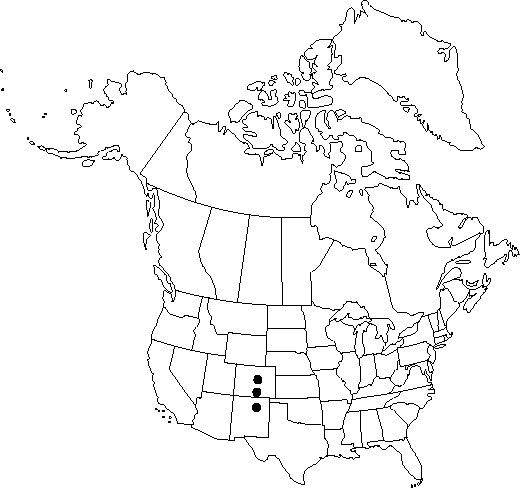Delphinium alpestre
Bull. Torrey Bot. Club 29: 146. 1902.
Stems 5-25 cm; base green, puberulent. Leaves cauline, 5-20, on proximal 1/5 of stem at anthesis; petiole 1-10 cm. Leaf blade round to pentagonal, 1.5-5 × 2-5 cm, puberulent; ultimate lobes 3-15, width 2-11 mm. Inflorescences 2-8-flowered; pedicel 1-4 cm, puberulent; bracteoles 1-3 mm from flowers, green, linear-lanceolate, 6-10 mm, puberulent. Flowers: sepals dark blue, apex rounded, puberulent, lateral sepals spreading to forward pointing, 11-14 × 5-7 mm, spurs straight except usually slightly down-curved at apex, varying from 20° above to 20° below horizontal, 8-12 mm; lower petal blades ± covering stamens, 4-6 mm, clefts 2-4 mm; hairs sparse, mostly near base of cleft, centered on inner lobes, white. Fruits 7-12 mm, 3.5-4 times longer than wide, puberulent. Seeds unwinged; seed coat cells elongate, surface roughened.
Phenology: Flowering mid-late summer.
Habitat: Exposed talus slopes on high peaks
Elevation: (3400-)3800 m and above
Distribution

Colo., N.Mex.
Discussion
Of conservation concern.
Delphinium alpestre is very similar to D. ramosum, possibly divergent from that taxon only since the most recent glaciation of North America, during which ancestors of D. alpestre might have survived on peaks above the ice, while ancestors of D. ramosum survived in valleys below the ice. Since glaciation, D. ramosum apparently has migrated upslope, near but not adjoining populations of D. alpestre.
Selected References
None.